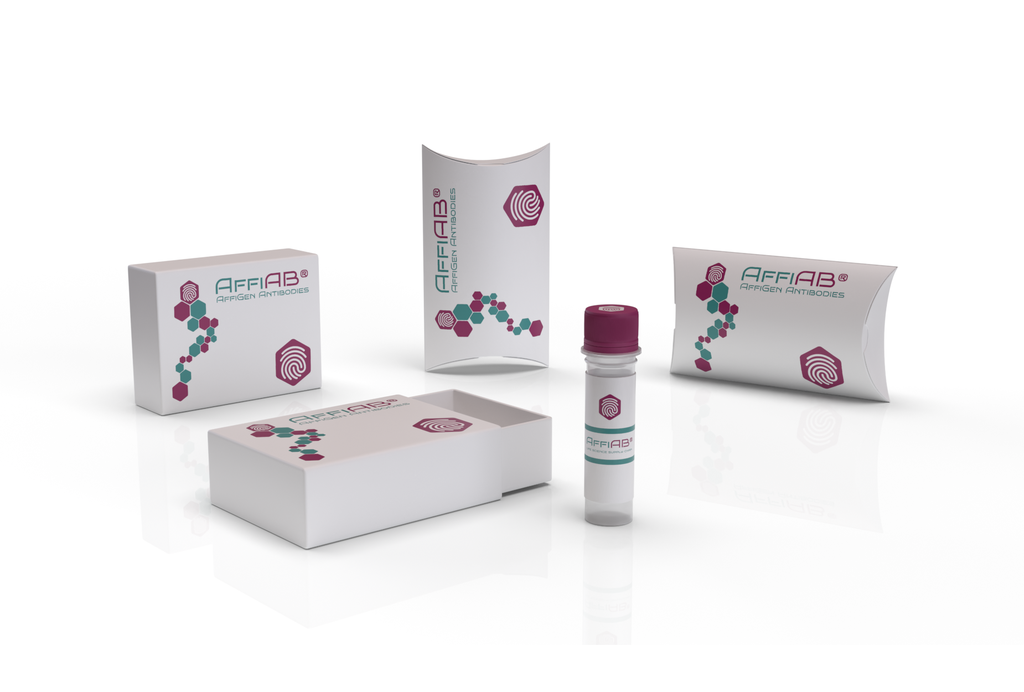AffiAB® Anti-FoxP1 Antibody
Forkhead box protein P1 is a protein that in humans is encoded by the FOXP1 gene. FOXP1 is necessary for the proper development of the brain, heart, and lung in mammals. It is a member of the large FOX family of transcription factors. This gene belongs to subfamily P of the forkhead box (FOX) transcription factor family. Forkhead box transcription factors play important roles in the regulation of tissue- and cell type-specific gene transcription during both development and adulthood. Forkhead box P1 protein contains both DNA-binding- and protein-protein binding-domains. This gene may act as a tumor suppressor as it is lost in several tumor types and maps to a chromosomal region (3p14.1) reported to contain a tumor suppressor gene (s) . Foxp1 is a transcription factor; specifically it is a transcriptional repressor. Fox genes are part of a forkhead DNA-binding domain family. This domain binds to sequences in promoters and enhancers of many genes. Foxp1 regulates a variety of important aspects of development including tissue development of: the lungs, brain, thymus and heart. In the heart Foxp1 has 3 vital roles, these include the regulation of cardiac myocyte maturation and proliferation, outflow tract separation of the pulmonary artery and aorta, and expression of Sox4 in cushions and myocardium. Foxp1 is also an important gene in muscle development of the esophagus and esophageal epithelium. Foxp1 is also an important regulator of lung airway morphogenesis. Foxp1 knockout embryos display severe defects in cardiac morphogenesis. A few of these defects include myocyte maturation and proliferation defects that cause a thin ventricular myocardial compact zone, non-separation of the pulmonary artery and aorta, and cardiomyocyte proliferation increase and defective differentiation. These defects, caused by Foxp1 inactivation, lead to fetal death. Disruptions of FoxP1 have been identified in very rare human patients and – similarly to FoxP2 - lead to cognitive dysfunction, including intellectual disability and autism spectrum disorder, together with language impairment.
Antibody type
Rabbit polyclonal Antibody
Uniprot ID
SwissProt: Q9H334 Human; SwissProt: P58462 Mouse
Recombinant
NO
Conjugation
Non-conjugated
Host
Rabbit
Isotype
IgG
Clone
N/A
KO/KD
N/A
Species reactivity
Human, Mouse
Tested applications
WB, IHC-P, FC
Predicted species reactivity
N/A
Immunogen
Synthetic peptide within C-terminal human FoxP1.
Storage
Store at +4°C after thawing. Aliquot store at -20°C. Avoid repeated freeze / thaw cycles.
Form
Liquid
Storage buffer
1*PBS (pH7.4) , 0.2% BSA, 50% Glycerol. Preservative: 0.05% Sodium Azide.
Concentration
1 mg/mL
Purity
Immunogen affinity purified.
Signal pathway
N/A
Recommended dilutions
WB:1:500-1:2, 000
; IHC-P:1:50-1:200
; FC:1:50-1:100
Molecular Weight
Predicted band size: 75 kDa
Subcellular location
Nucleus.
Positive control
Mouse testis tissue lysates, human tonsil tissue, human skin tissue, human small intestine tissue, MCF-7.
